← All articles
Iperius Remote among the best alternatives to TeamViewer
What is Iperius Remote and why is it the best alternative to TeamViewer: a complete analysis
Remote access software such as TeamViewer and Iperius Remote are essential tools for connecting to computers and devices remotely, both for smart working and for technical assistance. TeamViewer has been one of the most popular products in the industry for years, offering a wide range of features (from remote control to file transfer, chat and meetings) with an intuitive interface and multi-platform support. Iperius Remote, more recent and “made in Italy”, is proposed as a valid alternative, combining a rich set of advanced features with greater economic convenience, aimed at the needs of SMEs, freelancers and even large companies . It is important to note that both software offer a free version for personal (non-commercial) use, allowing you to test the basic features without initial costs.
Below we analyze in detail the two software on the main technical and operational aspects, highlighting in particular the strengths of Iperius Remote compared to TeamViewer.
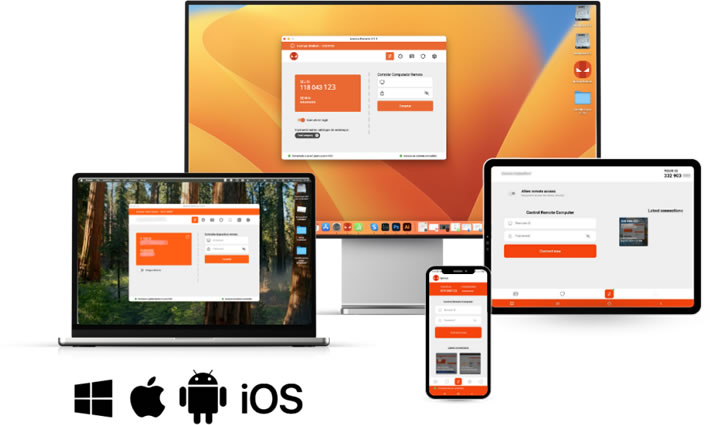
Features and Functionality Offered
Both TeamViewer and Iperius Remote provide a complete set of remote control features. Among these, the essential functions include cross-platform remote desktop (Windows, macOS, iOS, Android, Linux for TeamViewer; Windows, macOS, iOS, Android for Iperius), two-way file transfer , integrated chat and multi-monitor support. TeamViewer also historically integrates modules for online meetings and presentations, as well as specialized features such as browser access, VR/AR support and IoT integrations. However, in the area of pure remote desktop and IT support features, Iperius Remote offers an equally rich set, if not more focused on the typical needs of assistance and teleworking.
According to an independent comparative analysis, Iperius Remote offers a greater number of the most popular features than TeamViewer. In particular, Iperius natively includes advanced tools such as:
- Unlimited unattended access : Iperius can be installed as a service on an unlimited number of remote computers (clients) to connect at any time without user intervention, ideal for servers and company PCs that are always reachable.
- Multi-session and multi-user : supports simultaneous remote connections to the same device (multiple operators on the same desktop) and the management of multiple technicians/operators with their own account. For example, multi-user remote desktop sessions are possible in Iperius, thanks to Terminal Server support and simultaneous access by multiple operators.
- Shared address book and centralized management : allows you to have a remote device address book shared between teams, with the possibility of organizing it by company/customer, and a web administrative area to manage permissions, computer groups and operators, and consult detailed connection statistics.
- Additional features : Iperius offers advanced file transfer (including copy/paste and drag&drop and, under certain conditions, can transfer files of any size ), multi-user chat , screen sharing and presentation functions, remote printing , and even video recording of remote control sessions ( Iperius Remote Desktop: the best alternative to TeamViewer and AnyDesk | IlSoftware.it ). The latter allow, for example, to document technical interventions or train staff by reviewing recorded sessions.
- Distribution and customization : For corporate environments, Iperius includes mass deployment tools (massive installation via MSI packages and Group Policy) and complete client rebranding (customization with your own brand). This allows IT companies to quickly deploy the remote agent on many PCs and provide customers with a branded experience ( Iperius Remote – Buy license for remote control and support ).
TeamViewer, on the other hand, has most of these functions (for example, chat, file transfer, remote printing and session recording are also present in TeamViewer). However, some advanced features of Iperius Remote stand out because they are offered without hidden limitations and included in any license . For example, Iperius does not impose limits on the number of remote devices that can be managed or on the number of technical users , limiting only the concurrent sessions per license. In TeamViewer, on the other hand, commercial licenses traditionally limit or scale based on workstations or endpoints (e.g. up to 200–300 unattended devices for a Premium license) and named users, which can be restrictive as the number of machines to be supported grows. In short, in terms of features, Iperius Remote aligns itself with the big names like TeamViewer and covers all the key remote desktop needs , standing out for some options oriented towards companies (deployment, multi-user) and for the absence of limitations on users/devices.
Connection Security
Security is a crucial aspect of any remote access software. Both solutions use strong encryption protocols to protect transmitted data and prevent unauthorized access. TeamViewer has been using 256-bit AES encryption with 2048-bit RSA key exchange for years, standards considered secure at banking level, and offers optional two-factor authentication (2FA) for accounts to prevent unauthorized access. TeamViewer has a generally solid reputation in the security field; the product is used in enterprise contexts and complies with regulations such as GDPR and ISO standards for security management. It should be noted, however, that TeamViewer is often used by malicious people in scams (for example, fake technical support), which has led the company to implement anti-fraud measures and warnings to users. On a purely technical level, however, TeamViewer offers secure and reliable connections .
Iperius Remote has designed the architecture with a particular emphasis on “enterprise-grade” security. It uses end-to-end encryption on all communications and is updated to the latest algorithms: it supports TLS 1.3, DTLS-SRTP and HTTPS/WSS to ensure maximum protection of data in transit. In practice, communication between the local and remote host is highly encrypted, ensuring that any interceptions cannot decipher the content (defined by the company as “banking-grade security”). Furthermore, Iperius complies with GDPR and HIPAA regulations for the secure processing of sensitive data, a fundamental requirement if it is used in the healthcare sector or where privacy protection is in force. Iperius Remote also supports integrated two-factor authentication (2FA) for accounts, adding an additional level of verification to access.
Another strong point of Iperius in the security management field is the presence of configurable granular security policies : an IT administrator can define specific permissions for each operator and for each remote computer, for example deciding who can access which machine and with which privileges ( Working from home with Iperius – Remote access to the office PC ). This fine management of permissions, combined with the possibility of setting multiple passwords and different roles , allows for rigorous control in corporate scenarios.
Both software also allow you to activate a “Privacy Mode” (black screen and mouse/keyboard lock on the controlled computer) to protect confidentiality when working on machines in the presence of users who are not authorized to see the operations – a useful feature, for example, during remote access to shared office workstations.
In summary, both TeamViewer and Iperius Remote offer a secure environment for remote desktop, but Iperius stands out for its adoption of the most advanced cryptographic technologies (TLS 1.3) and for the native integration of 2FA and advanced security policies . This makes it highly reliable even for organizations with stringent security requirements.
Quality/Price Ratio
One of the elements that most differentiates Iperius Remote from TeamViewer is the quality-price ratio of the solution, especially in the professional and business fields. TeamViewer adopts a relatively expensive commercial licensing model: TeamViewer paid licenses are offered on a subscription basis (annual) with different levels (Business, Premium, Corporate). For example, the Business license (for a single operator, one session at a time) starts at around €298.80 per year ( Compare TeamViewer Remote vs Iperius Remote – Capterra Italia 2025 ), while higher multi-user and multi-session plans can reach several hundred euros per month (the TeamViewer Premium license, required for 2-3 simultaneous sessions and multiple users, costs over €1000/year). This investment is often sustainable for large companies, but is challenging for SMEs and individual professionals. Although TeamViewer offers a wide range of features, many users complain that the cost is not proportionate to the use they make of it, especially if limited to classic remote support.
Iperius Remote instead chooses a much more flexible and convenient licensing model , designed to scale from small to large reality. Iperius licenses are based exclusively on the number of simultaneous connections needed, while everything else (number of remote devices, workstations on which to install the software, and number of operators) is unlimited in each plan. This means that even the smallest license allows you to manage an infinite number of remote clients and technicians, limiting only how many active sessions you can have at the same time.
The Iperius Remote Small plan (the cheapest) includes 2 simultaneous connections and costs only around €8.39 per month (billed annually) – that is ~€100 per year, a price over 3 times lower than the TeamViewer base license, while also offering double the number of concurrent sessions compared to TeamViewer’s Business license (which only allows one). Overall, the entry-level price of Iperius Remote is significantly lower than that of TeamViewer (€8.39 vs €15.90 per month), making it a very attractive option for small businesses on a limited budget ( Compare Iperius Remote vs. TeamViewer | G2 ).
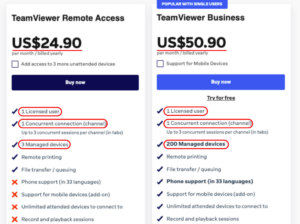
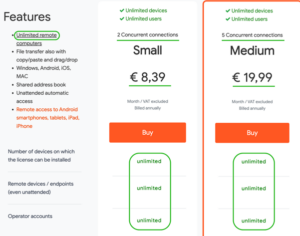
Moving up a level, Iperius offers Medium and Professional packages with a greater number of simultaneous connections (5, 10, 15 up to 100+ sessions in parallel) at progressively higher costs but with an extremely advantageous connection/price ratio . For example, with a cost comparable to the TeamViewer Business license , Iperius Remote allows you to have up to 10 simultaneous connections instead of one. This translates into enormous economic efficiency for support teams: multiple technicians can work simultaneously with a single subscription.
The convenience of Iperius has been highlighted by several independent observers. In a comparative evaluation, the quality-price ratio of Iperius Remote is defined as “unmatched” and the “particularly careful and attractive” pricing policy is a decisive plus in preferring it as a reliable alternative to TeamViewer. In other words, for the same remote access needs, Iperius allows you to obtain the same features at a significantly lower cost.
Also, do not forget that software updates and technical support are included in the price for Iperius. Iperius also provides direct support (in Italian, for those who need it) already included in the licenses, without having to sign expensive additional support contracts.
In summary, from an economic point of view, Iperius Remote is significantly more affordable , especially for SMEs and professionals : with a fraction of the budget required by TeamViewer, you can obtain multi-connection licenses, without sacrificing functionality or security. This also allows smaller companies to adopt professional remote assistance and smart working tools without weighing down operating costs. At the same time, the savings become significant even for larger companies if they need to equip many operators with remote access – Iperius can lead to total costs that are much lower for large teams than TeamViewer’s enterprise licenses (in the order of thousands of euros per year).
Remote Working Support (Smart Working)
Both software under review have proven to be valuable allies in the era of smart working , allowing employees to access office PCs from home in a simple and secure way. During the pandemic, for example, TeamViewer was widely used to enable remote working on a large scale, thanks to its reliability and diffusion. Iperius Remote, although less known initially, was designed specifically to facilitate remote working configurations in the corporate environment.
Iperius Remote is proposed as a complete solution for working from home , with particular attention to ease of implementation and centralized management. As indicated on the official website, it is “safe, simple, and at an unbeatable price” for smart working ( Working from home with Iperius – Remote access to the office PC ). In practice, an IT administrator can install Iperius on office computers (as a service for unattended access) and allow employees to connect from their remote workstations in a few minutes. No complicated VPN or firewall configurations are necessary: the connection is immediate and you can operate in full-screen mode as if you were physically at the company PC.
A very useful aspect of Iperius for smart working is the aforementioned remote computer directory with permission management per user. In a team, each employee can have personalized credentials to access only certain computers (e.g. their office desktop PC), with policies that prevent unauthorized cross-access. The administrator can monitor all connections through detailed statistics of connection times and activity logs, useful for checking remote working hours or for security audits.
Furthermore, Iperius integrates features designed to replicate the office experience remotely: for example, remote printing , which allows the home worker to print documents on the local printer as if they were printing from the office. Iperius allows you to install a virtual printer and automatically redirect print jobs from the remote PC to the home printer. This is extremely convenient for continuing to manage paper documentation or forms without having to manually transfer files. TeamViewer also supports a similar remote printing function, a sign that both software are mature in these scenarios.
Finally, both TeamViewer and Iperius allow you to maintain persistent sessions on servers: an administrator can connect to company servers out of hours for maintenance or checks, ensuring 24/7 operation of the infrastructure. In general, however, Iperius Remote emphasizes smart working as one of its main use cases , offering all the tools needed to quickly configure the work from home of an entire team . The combination of easy unattended access, security (2FA) and tools such as remote printing and statistics makes Iperius an excellent choice for companies that want to enable or enhance smart working with a limited investment.
Mobile Device Support
In today’s context, remote support is not limited to computers alone but increasingly involves smartphones and tablets . Just think of technical assistance on customers’ mobile devices, or the need to access a server even from your mobile phone. In this area, both TeamViewer and Iperius Remote offer dedicated solutions.
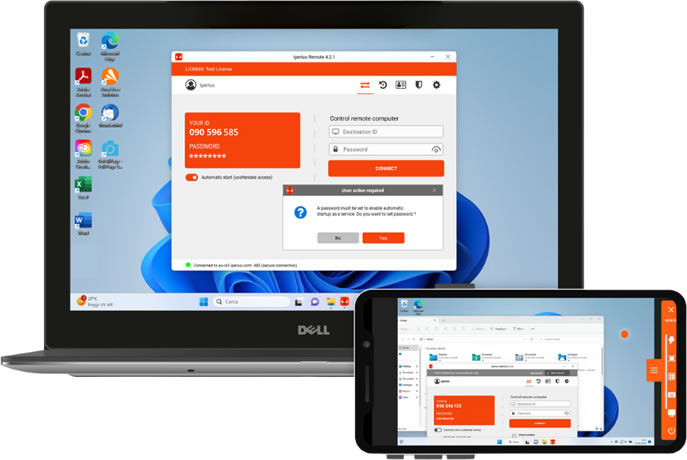
TeamViewer has long had mobile apps (for Android, iOS) that allow you to both control a PC/Mac from your smartphone and remotely control a mobile device via the TeamViewer QuickSupport feature (the latter allows you to, for example, see the screen of an Android/iOS phone and interact with it, with some limitations on iOS due to system constraints). TeamViewer supports full control of Android devices (especially supported brands) and screen sharing on iPhone/iPad, all protected by the same security mechanisms as the desktop platform. This has made TeamViewer a popular tool for mobile support as well (think of app makers providing support to users directly on their phone via QuickSupport).
Iperius Remote is no exception: it includes bidirectional multiplatform support since recent versions. The Iperius Remote apps for Android and iOS allow you to connect from the mobile device to PC/Mac , or to do the opposite, that is, from the PC to the mobile device ( Iperius Remote – Access and Support mobile devices ). In practice, with a single Iperius mobile application you can manage every scenario:
- A technician can have the customer install the Iperius Remote app on their smartphone and then connect from their PC to control/configure the customer’s mobile device (useful for mobile app support, system settings, etc.).
- Or a user on the go can, from his phone or tablet, access the office computer via the app, having almost all the functionality available as from a PC (full remote control of the desktop, sending commands, etc.).
Iperius Remote offers full remote control for Android tablets and phones and the best screen sharing for iOS (where Apple limitations prevent full control). This means that on Android you can interact completely (touch, open apps, change settings) as if the technician had the device in his hand, with the user’s consent of course. On iPhone/iPad you can view the screen in real time and guide the user through operations (similar to TeamViewer on iOS). This ability to remotely assist mobile devices wherever they are is a huge advantage for those providing IT support: problems on an employee’s company smartphone or a customer’s tablet can be solved immediately remotely.
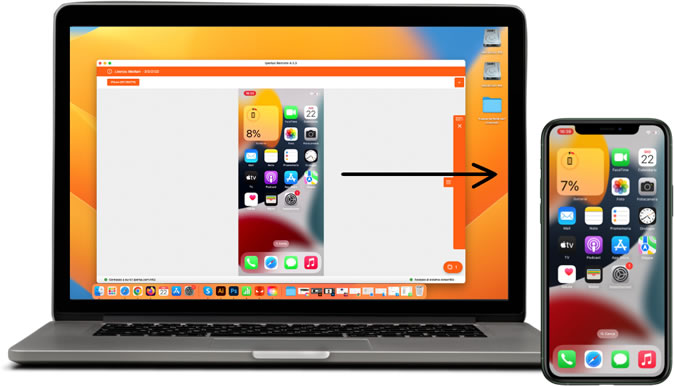
A notable point is Iperius’ unified approach : the same application and infrastructure manages desktop and mobile connections, without having to juggle between different tools. For example, TeamViewer requires the main app to control from mobile to PC, and the (separate) QuickSupport app to control from PC to mobile; Iperius unifies these functions, simplifying the experience. In multi-platform scenarios, Iperius allows cross-combinations such as Windows ➔ Android, iOS ➔ Windows, Mac ➔ iPhone, etc., all natively supported.
In conclusion, on the mobile front, both solutions offer robust support. TeamViewer has the maturity and optimizations accumulated over time (e.g. excellent mobile remote control performance, compatibility with rugged devices, etc.), while Iperius Remote brings the same versatility to the table by including it in every license without significant additional costs. For a company that intends to offer support on any type of device (PC or mobile) , Iperius represents a cost-effective option to cover all use cases with a single integrated tool.
Ease of Use and Technical Support
Remote control software must be not only powerful but also easy to use , otherwise widespread adoption in corporate environments or by non-technical personnel can be problematic. TeamViewer is famous for its attention to user experience: the user interface is simple, translated into many languages, and allows you to start a remote session in just a few clicks. TeamViewer’s zero -config – no router port opening or complex network settings – has been one of the factors behind its success. Even non-expert users can get assistance by opening TeamViewer and providing the technician with the ID and temporary password. In a corporate environment, implementing TeamViewer only requires installing the client (or running the portable version) and distributing credentials, without having to intervene on the network infrastructure.
Iperius Remote embraces the same “plug & play” philosophy. From the first installation it is light and has an intuitive interface , which in general resembles other similar tools (ID list, buttons to connect or accept connections, etc.). No router or firewall configuration is required: Iperius is designed to work immediately, out-of-the-box , thanks to cloud servers that route the connection where direct peer-to-peer communication is not possible. This eliminates potential technical obstacles to first use. Starting a session is equally simple: just start the program (which does not require mandatory client-side installation, it can work as a stand-alone executable), and communicate the unique ID and generated password to the remote partner, in a completely similar way to TeamViewer.
Several users have highlighted the ease of use of Iperius Remote in their reviews: “It is reliable, safe and easy to use” , “The user interface is intuitive and user-friendly” ( Iperius Remote vs TeamViewer Remote – 2025 Comparison – Software Advice ). Another user notes that the connection is stable and of good quality, and that the basic functions (file transfer, chat) are all present, making Iperius “a rather complete tool for remote desktop” . These testimonials confirm that, despite being a relatively new product, Iperius Remote has already reached a notable maturity in terms of usability.
Regarding technical support and documentation: TeamViewer, being a long-standing multinational company, offers a large multilingual knowledge base, community forum, and official support (for paying customers) with various channels. Iperius Remote, despite having a smaller user base, boasts quick and direct support provided by the developer (Enter Software, a company that still has a history of more than 25 years) – with the advantage, for Italian users, of being able to interact in their language with qualified staff. Furthermore, on the Iperius website there are guides, step-by-step tutorials and explanatory videos on how to use the various functions (installation of the service for automatic access, use of 2FA, remote printing, etc.), making it easier to learn the more advanced features.
Another aspect of ease of use is the flexibility of license usage . As already mentioned, Iperius allows unlimited installations: this means that a technician can install the client wherever he needs it without worrying about “running out” of license slots – a notable simplification in daily management compared to having to maintain a list of authorized IDs (as happens in TeamViewer Business, which has a limit of 200-300 IDs). All you need is an active license and you can use Iperius from any PC to connect to any remote device. This freedom reduces the administrative burden and makes use very streamlined and immediate , a feature especially appreciated in small businesses without a dedicated IT department.
Ultimately, both TeamViewer and Iperius Remote are user-friendly products , but Iperius manages to combine a clean interface with greater lightness and ease of deployment in modern organizations. The absence of barriers to entry (even the free version of Iperius, like that of TeamViewer, allows you to start immediately with the basic functions) and the focus on a fast and no-frills user experience mean that Iperius excels in usability – as also confirmed by the comparison of a review platform, in which Iperius has higher scores than TeamViewer for ease of use and satisfaction of requirements.
Conclusions
In conclusion, from the in-depth technical comparison between TeamViewer and Iperius Remote, both emerge as excellent remote access software, suitable for teleworking and remote IT assistance scenarios. TeamViewer remains a proven solution full of advanced features, with a globally recognized brand and some additional features (meetings, IoT integrations, AR, etc.) that go beyond pure remote desktop. On the other hand, Iperius Remote has established itself as a modern and highly competitive alternative , offering the same fundamental and many advanced features , with a focus on essentiality and security for professional remote support.
The advantages of Iperius Remote are particularly evident for SMEs, freelancers and medium-sized IT departments , i.e. for those users who are looking for a robust product but with a sustainable cost . Iperius offers a quality/price ratio that is difficult to match by the competition, guaranteeing secure, fast and stable connections and at the same time flexible and drastically cheaper licenses than TeamViewer for the same use. Even large companies can benefit from Iperius, being able to scale it to hundreds of remote workstations with linear and controlled costs, and being able to integrate it into their processes (thanks to tools such as the MSI for deployment and the API/web console for centralized management).
In terms of security , both software offer high-level protection; Iperius emphasizes the use of updated technologies (TLS 1.3, 2FA) with nothing to envy to well-known solutions such as TeamViewer. In terms of features , Iperius covers all remote desktop support needs (including mobile, chat, file transfer, remote printing, etc.) and introduces features designed for the business context (shared address book, multi-user, policy) that simplify the life of IT companies.
Don’t forget that both offer a free version for personal use: this means that a professional can try Iperius Remote without initial commitment and directly verify the ease of use and the effectiveness of its basic functions, just as many have known TeamViewer starting from the free version. For personal or occasional use, both solutions are valid and functional without costs.
Ultimately, the choice between TeamViewer and Iperius Remote depends on the context and priorities of the user or company. If you favor a more varied ecosystem and some extra functions beyond the remote desktop, TeamViewer remains a solid choice. If instead the focus is on professional use aimed at remote support and smart working with an eye on the budget, Iperius Remote emerges as a highly recommended solution , being able to offer an equivalent level of service with significant economic and operational advantages . The combination of richness of features, security and convenience makes Iperius Remote a convincing tool and suitable to replace or excellently support the most famous competitor, especially for those companies that want to optimize costs without sacrificing the quality of the software.
For any questions or doubts regarding this article,
Contact us